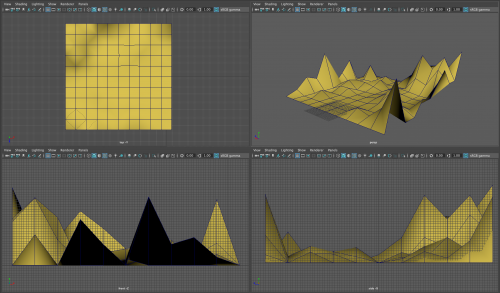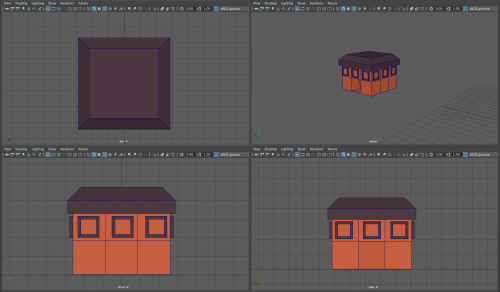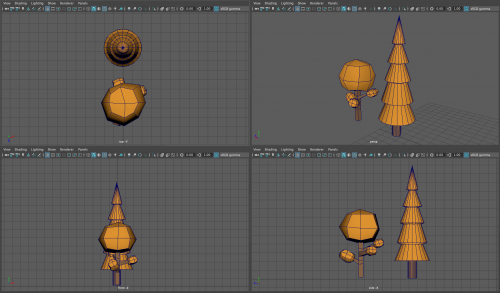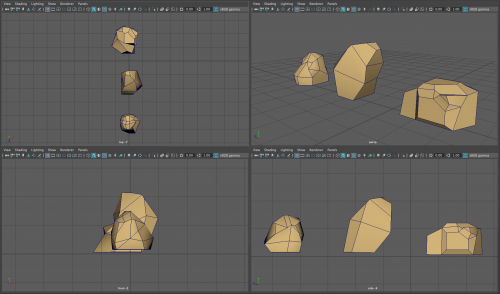APD Week 4 - Play & Place:
***This week’s response was made in collaboration with Rui Sun***
APD Week 4 Portal - https://youtu.be/-fwH5eqtE40
APD Week 4 Portal Test - https://www.youtube.com/watch?v=8dl2fJZ8FBY
Theme:
Play & Place - to consider how we respond to and engage with environments, and the ways we might use play to transform those responses of acts of engagement with them.
Method:
We will create an AR “I Spy” experience that will allow the audience to engage with a virtual place by searching for hidden figures inside of it.
Context:
How ‘I Spy’ Books Are Made - https://www.youtube.com/watch?v=sz8luEznxbM
A highly playful and captivating book series that creates spaces and places out of an assortment of inanimate objects, then asks the reader to engage with it to find the hidden objects within.
Where’s Wally - http://www.todayifoundout.com/index.php/2013/08/the-history-of-wheres-waldo/
Another famous book series that further stretches the focus on space and place, creating chaotically crowded locations and asking the reader to look closer in order to search for Wally inside them.
The Ludic City - Quentin Stevens
Stevens discusses the ways play can be incorporated into urban spaces, pointing out that while playfulness is largely neglected in urban society, it helps to allow people to become re-enchanted with cities and other urban locations. We want to take this idea of allowing our users to become enchanted with the place that they’re experiencing.
A Study in Play, Pleasure and Interaction Design - Brigid Costello & Ernest Edmonds
Through creating an AR location for the audience to engage with, we had to consider how we wanted the users to feel while experiencing the space and what elements of play they might be able to experience. I believe that an idea engagement would entail the pleasure categories of; exploration of the AR place and searching for the hidden figures; competition in comparing with other users to see who could find more hidden figures and how fast; captivation in witnessing a place that the user knows does not exist but still being able to actively engage with such a space.
The production of this week’s response itself lent to the categories of; difficulty in deepening my understanding of Unity and coding; camaraderie through working in collaboration with Rui in a medium that he is far more familiar with; discovery in learning how to use AR to create a ‘window’ or ’portal’ to a place that could not physically exist within an occupied space.
How To Unity AR Portal - https://youtu.be/1cwm6sCcV_o?list=PLKIKuXdn4ZMhwJmPnYI0e7Ixv94ZFPvEP
A handy tutorial on how to create an AR ‘portal’ in Unity using material and shader properties.
Response:
Our initial idea was to create an AR ‘window’ into another place, using the screen projectors in the MAGI Studio as the base. After workshopping the idea, decided to incorporate the ‘play’ aspect by making the users excited to engage with the virtual location by incorporating the exploration element from the I Spy and Where’s Wally book series.
To create this, we decided to build a prototype location made of an assortment of environmental assets, e.g. trees and buildings, and hid four objects within the space;
- a cat
- a bird
- a flower
- a kite
Sahaj was able to point us in the right direction when we raised the idea of creating a ‘window’ in Unity, providing us with a link to the AR ‘portal’ tutorial. After successfully replicating the ‘portal’ and arranging our assets into a 3D scene, we were able to implement the AR aspect and have our virtual environment exist in a space it could not physically exist!
Roles:
3D Modelling - Ben
Portal Investigation - Ben
3D Scene Arrangement - Rui
AR & Portal Implementation - Rui
Reflection:
It was great to be able to team up with Rui for this week’s response, as I’ve found myself becoming more curious about the capabilities of Unity, despite still needing plenty of assistance in that regard. His expertise allowed for a response that I would never have been able to produce alone! Additionally, sharing the workload meant that we were able to produce a prototype that is fairly close to a polished response, and could be further iterated into a solid exhibition piece in the future. Being able to work alongside someone also meant that we could have fun with the task itself and bounce ideas off of each other to keep improving it and getting general feedback.
In the miniature version of the AR experience, the ‘I Spy’ element is lost simply due to the small scale of the virtual location. On top of this, some of the 3D assets glitch out at times, which may be due to bugs in the shaders or camera detection software. While we have yet to try the AR ‘I Spy’ experience using the projector screens in the MAGI Studios, these issues may be resolved when tested on the big screens. Despite this, I think the prototype we managed to create in such a short timeframe takes us very close to achieving our desired outcome and hopefully close to our intended user experience too!
About This Work
By Ben Mansur
Email Ben Mansur
Published On: 18/08/2019









